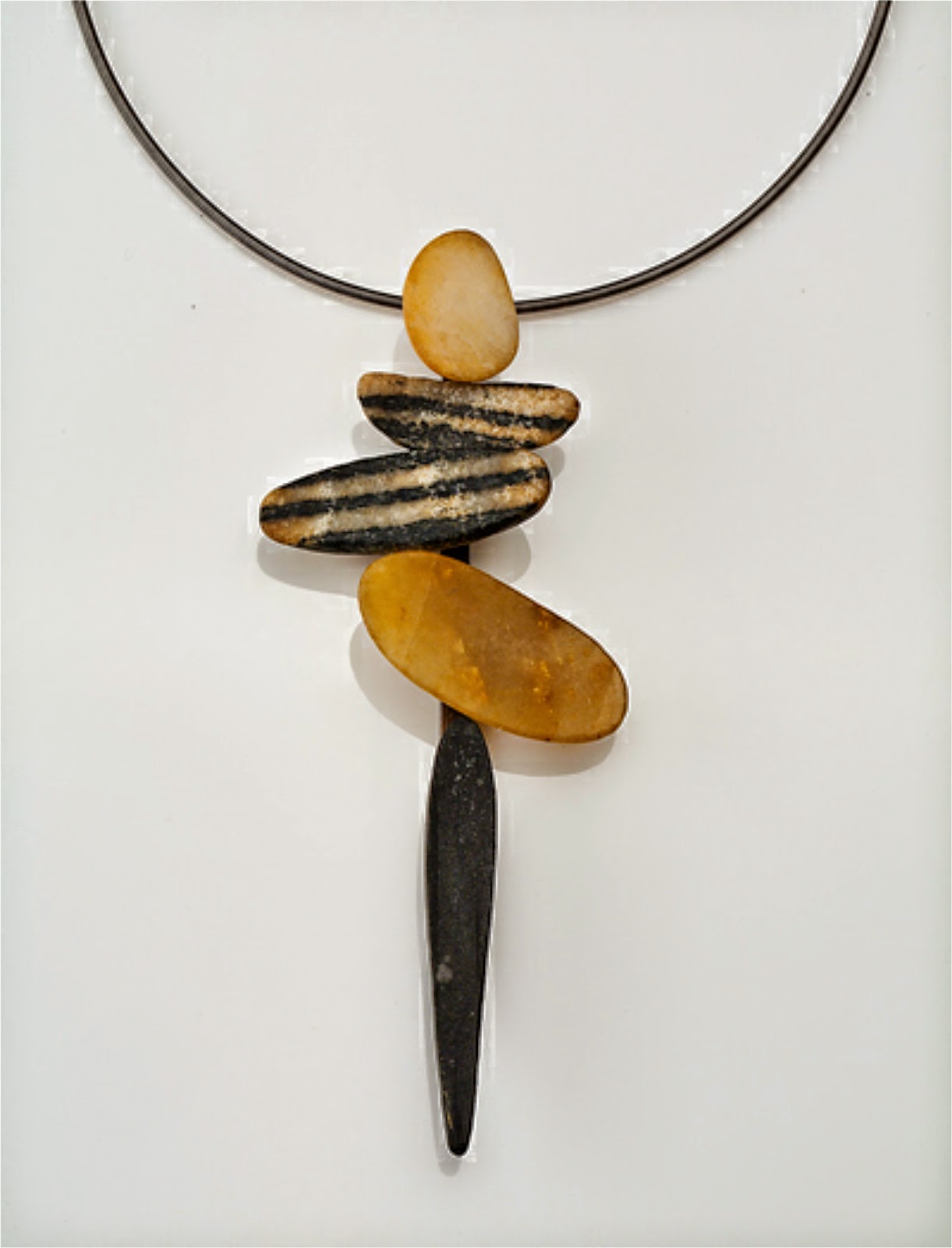The Jewelry of Margaret De Patta was a seminal figure in the history of American art jewelry and its relationship to constructivism and the Bauhaus. De Patta’s jewelry embodies the concept of ‘vision in motion’ as championed by the legendary Bauhaus visionary, Hungarian-born László Moholy-Nagy. In the 1930's Margaret De Patta turned to jewelry and was already an established jeweler by the time she attended the Chicago Bauhaus in 1940. In the early 1940s, she returned to San Francisco where she spent the rest of her life making one-of-a-kind and production jewelry that was perfectly in line with Bauhaus aesthetics. De Patta was sixteen when the German Bauhaus was established in 1919. It moved from Weimar to Dessau and then to Berlin for one final year in 1933 before it closed for good after being raided by the Nazis. As German democracy collapsed in the 1930's, most of the Bauhaus faculty was forced to flee, including Moholy-Nagy, one of the principal Dessau faculty who had resigned in 1928. It is difficult to describe the Bauhaus in just a few words. It was neither a technical school nor a traditional art academy. The Bauhaus trained artists, designers and craftsmen to create superior design destined for industrial production. Inherent in the Bauhaus philosophy was a democratic principle that good design should be widely available. As a result, students were not trained as specialists but as well-rounded individuals whose talents could be applied to many different design problems. These factors played an important part in shaping De Patta’s life and art.
Constructivism as an artistic movement originated in Russia around 1917 to promote art for societal and political purposes, but Moholy-Nagy was focused on the purely visual aspects of constructivism and was not interested in using it for political purposes. He took an unconventional approach to painting and sculpture, using a creative process based on the assembly of various, often industrial-looking, components. Constructivism called for a careful technical analysis of modern materials and included light and transparency as design elements to create more open compositions. Moholy-Nagy’s celebrated Light Space-Modulator was a machine-like sculpture that he developed over many years beginning in 1922 to create illusionary volume by dividing space through light and motion. The Light-Space-Modulator includes many constructivist elements: flat planes that intersect space at sharp angles, the movement of screens, perforated plates, revolving discs and vertical rods. Moholy-Nagy was particularly interested in exploring the shadows cast through translucent materials onto other planes and surrounding walls. Moholy-Nagy fled Germany as the political atmosphere changed and became active in Amsterdam and then London before the Association of Arts and Industries in Chicago invited him to come to the United States and open a new design school based on Bauhaus principles. (This was on the recommendation of Walter Gropius who was already teaching at Harvard by that time.) Moholy-Nagy founded the Chicago Bauhaus in 1937 and was its head until his untimely death in 1946. The school converted a Victorian mansion owned by Marshall Field, the department store magnate, gutting the original interior to eliminate the heavy ornamentation and create open interiors. Photographs show the added workshop area, a white cube jutting out the side of the building.
The renovation parallels the transformation De Patta accomplished in converting the conventional jewelry of her day into the new, modernist aesthetic. De Patta’s life took a dramatic turn and her jewelry career was born in 1929 when she was shopping for her wedding ring. When she could not find one with a modernist design, she decided to make her own. Unfortunately, the whereabouts of the ring are unknown. She saw that no one was making jewelry inspired along the lines of modern art. With no formal training programs available, she was primarily self-taught. She turned to books on jewelry making and studied ethnic jewelry in museums. Her very early jewelry experiments demonstrate how she used ethnic museum pieces as models to explore how jewelry was fabricated. A bracelet of beaten metal and simple wire circles and spirals shows a somewhat Moroccan influence. Only a short time later, her work had changed dramatically, becoming carefully balanced, modern compositions. She made pins from flat sheets of silver, cutting out simple shapes that she assembled.
.jpg)
.jpg)

.jpg)


.jpg)

.jpg)


















.jpg)